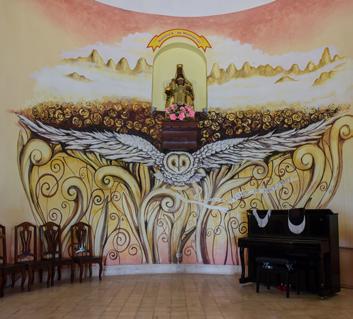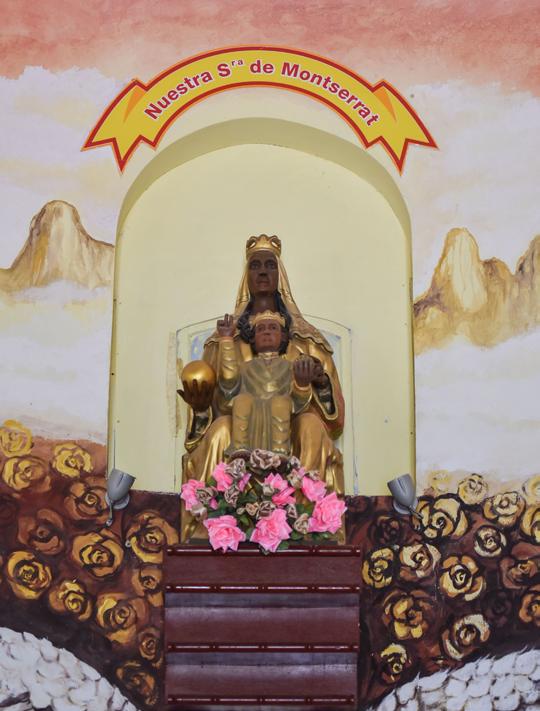
8 minute read
RECORRIENDO EL CAIMÁN
LA ERMITA DE MONSERRATE UN LEGADO CATALÁN
La historia de una civilización, un país o de una ciudad puede ser contada a través de sus lugares. Los edificios que las componen son la muestra fehaciente de que el tiempo puede ser implacable, pero la huella que dejan estos espacios quedará marcada para siempre en la memoria de los hombres para recordarnos quiénes fuimos o para mostrarnos hacia dónde vamos. Vigilante sobre la ciudad de Matanzas, protectora del umbral entre la naturaleza y el hombre, la Ermita de Nuestra Señora de Monserrat recuerda a todo aquel que a ella acude que la memoria histórica de un pueblo va más allá de las historias contadas.
La Ermita
Aprobada su construcción en el año 1872 por la Junta Directiva de la Ciudad de Matanzas y finalizada en 1874, la edificación eclesiástica quedó ubicada en una de las alturas más connotadas de la ciudad perteneciente por aquel entonces a la familia Simpson. Sí, los mismos cuyos dominios le dan nombre al primer danzón, Las Alturas de Simpson, nombrado a la postre como baile nacional. La estructura contó con el apoyo financiero de varias de las familias más acaudaladas de la ciudad y de los colonos de origen catalán, quienes establecerían allí un altar a su santa patrona: la Virgen de Monserrat.
The history of a civilization, a country or a city can be told through its spaces. The buildings that compose them are irrefutable proof that, although time is relentless, the traces left by these places will always remain in the memory of people, reminding us of who we were or showing us where we are going. High above the city of Matanzas, protecting the threshold between nature and man, the Hermitage of Our Lady of Monserrate reminds all those who visit it that the historical memory of a people transcends the stories told.
The Hermitage of Monserrate, a Catalan Legacy The Hermitage » The church building, whose construction was approved by the Board of Directors of the City of Matanzas in 1872 and completed in 1874, is located on one of the town's most famous hills, owned at the time by the Simpson family. Yes, this is the same family whose land gave its name to the first danzón - Las Alturas de Simpson - which later became the national dance. The structure had the financial support of several of the wealthiest families of the city and of the settlers of Catalan origin, who would establish there an altar to their patron saint: Our Lady of Monserrate.
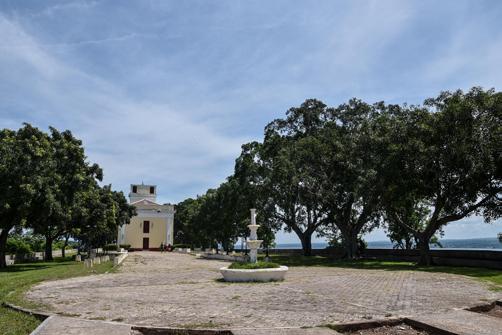
Ya finalizada la obra arquitectónica, no fue hasta 1875 que se trasladó hacia allí la imagen de la Patrona de Cataluña, obra del escultor Don Juan Roig y Soler y reconocida por especialistas y visitantes como una verdadera obra de arte. A partir de ese momento La Morenata, como se le conoce también, vigila y protege la Ciudad de Los Puentes.
El Peñón del Yumurí
No son pocas las historias y leyendas que encierran el área donde está enclavada la edificación, reconocida como uno de los mejores ejemplos de la arquitectura oratoria española en Cuba durante el siglo XIX. Por su ubicación geográfica en una las laderas de El Abra del Yumurí, la altura hace recordar la montaña de Monserrat en la lejana Cataluña, debido las formaciones de rocas calizas y furnias que le dan un aspecto riesgoso, para evocar así a la mítica Virgen de Monserrat. Desde su privilegiada posición aparece ante el visitante el imponente Valle del Yumurí, con su río, sus caminos y su verdor a un lado, mientras que al otro se asoma la Atenas de Cuba (Matanzas), fundada en 1693, que con su majestuosa bahía y urbanización colonial deleitan a quien llega hasta sus lares.
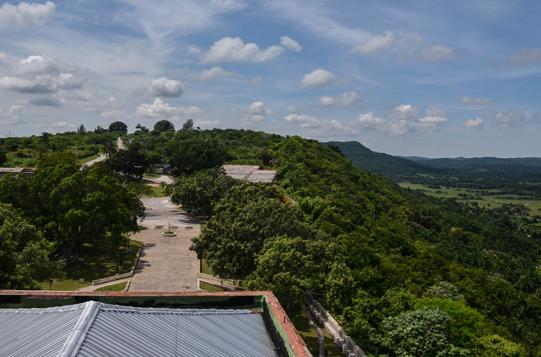
Once the architectural work was finished, it was not until 1875 that the image of the Patron Saint of Catalonia was moved there, the work of the sculptor Don Juan Roig y Soler and recognized by specialists and visitors as a true work of art. From that moment on, La Morenata, as she is also known, watches over and protects the City of Bridges.
El Peñón del Yumurí
There are many stories and legends associated with this place, considered one of the best examples of Spanish oratory architecture in Cuba in the 19th century. Because of its geographical location on one of the slopes of El Abra del Yumurí, the height reminds us of the mountain of Monserrate in faraway Catalonia, due to the limestone rock formations and peaks that give it a perilous appearance, thus evoking the mythical Virgin of Monserrate. From its privileged position, the imposing Yumurí Valley appears before the visitor, with its river, roads and greenery on one side, while on the other side, the Atenas of Cuba (Matanzas), founded in 1693, which with its majestic bay and colonial urbanization delights those who arrive at its shores.
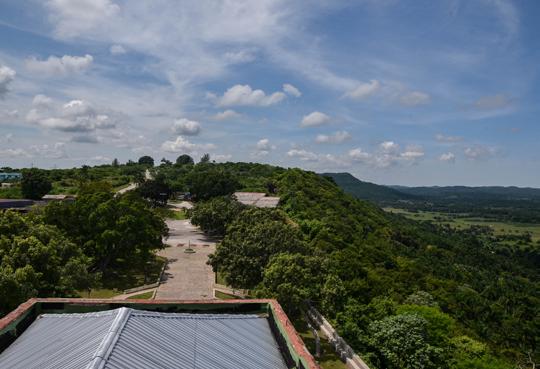
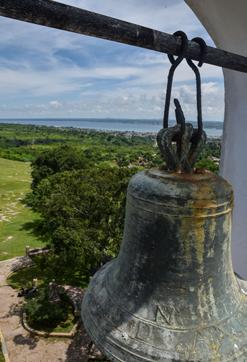
La Colla
La Ermita de Monserrate es más que una edificación, es tal vez el lugar donde descansa la huella más profunda de la presencia catalana en la isla. Un ejemplo de ello resulta la fiesta de La Colla. Desde su inauguración, el 8 de diciembre de 1875, daría inicio a una de las tradiciones culturales de origen español más famosas en el país y que perdura hasta nuestros días. Con antecedentes que se remontan hasta 1871 cuando ya se realizaban en la urbe yumurina fiestas populares con motivo de la unión de todas las provincias españolas, no fue hasta la inauguración de la Ermita que pasaron a rendir homenaje a la Virgen de Monserrate a partir de la constitución de la Colla, una agrupación integrada por colonos catalanes encargada de organizar la festividad. La primera aparición organizada surge en 1887 donde, impulsados por dicha sociedad, los habitantes de la ciudad acuden todos, sin distinción de región de origen o clase social, a las alturas de la ermita a disfrutar de los platillos que ofrecían los catalanes. Según cuentan los cronistas de la época, llegaron a reunirse en el lugar más de cinco mil personas. En la actualidad y luego de varios periodos de interrupción, la Fiesta de La Colla se sigue celebrando cada 8 de diciembre por los catalanes y sus descendientes que radican en la isla y que, acompañados de los matanceros, elaboran y trasladan un pan gigante hasta las inmediaciones de la Ermita donde es disfrutado por los presentes.


La Colla
More than a building, the Hermitage of Monserrate is perhaps the place where the Catalans left their deepest mark on the island. The celebration of La Colla is an excellent example of this. Since its inauguration on December 8th, 1875, it has given rise to one of the most famous Spanish cultural traditions in the country, which continues to this day. Its origins date back to 1871, when the city was already celebrating popular festivities on the occasion of the unification of the Spanish provinces. After the inauguration of the Hermitage, homage to the Virgin of Monserrate began to be paid and La Colla, a group of Catalan settlers in charge of organizing the festivities, was founded. The first organized celebration took place in 1887 where, encouraged by this society, the inhabitants of the city, without distinction of region of origin or social class, all went to the heights of the hermitage to enjoy the dishes offered by the Catalans. According to the chroniclers of the time, more than five thousand people gathered there. Nowadays, and after several periods of interruption, the Fiesta de La Colla is still celebrated every December 8th by the Catalans and their descendants living on the island and who, together with the residents of Matanzas prepare a huge loaf of bread and take it to the surroundings of the hermitage so that all those present can enjoy it.
Un espacio para todos
La Ermita resulta un destino ideal para el viajero. Las vistas de la ciudad, el reencuentro con las raíces hispanas de una isla que no deja de asombrar y la tranquilidad en sus áreas resultan un atrayente significativo para todo aquel que busque un poco de paz. Varias instalaciones gastronómicas, así como espacios ideados para días de camping pueden facilitar la estancia, haciendo del lugar el remanso perfecto para relajarse a la vista del mar, la ciudad y su valle. Su acceso es fácil y si decide caminar hasta ahí descubrirá el entorno único que rodea la estructura. Cuenta la leyenda que si sube hasta el tejado y suena su campana sus deseos se cumplirán pues la Virgen de Monserrat estará con usted, ¿será verdad? Puede probarlo usted mismo mientras disfruta de una vista que jamás olvidará.
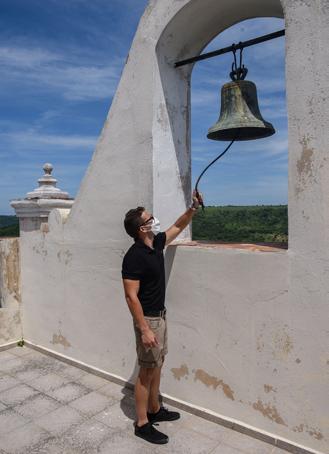
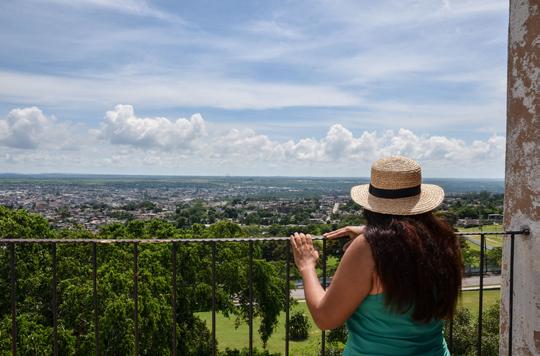
A place for everyone
The hermitage is an ideal destination for travelers. The views of the city, the reencounter with the island's Hispanic roots and the tranquility of its grounds are an attraction for those seeking peace and tranquility. Several gastronomic establishments, as well as spaces designed for camping days, can ease the stay, making the place the perfect place to relax overlooking the sea, the city and its valley. It is easily accessible and if you decide to hike, you will discover the unique environment that surrounds this structure. Is it true that, according to legend, if you go up to the roof and ring the bell, your wish will come true because the Virgin of Monserrate will be with you? You can see for yourself while enjoying a view you will never forget.
